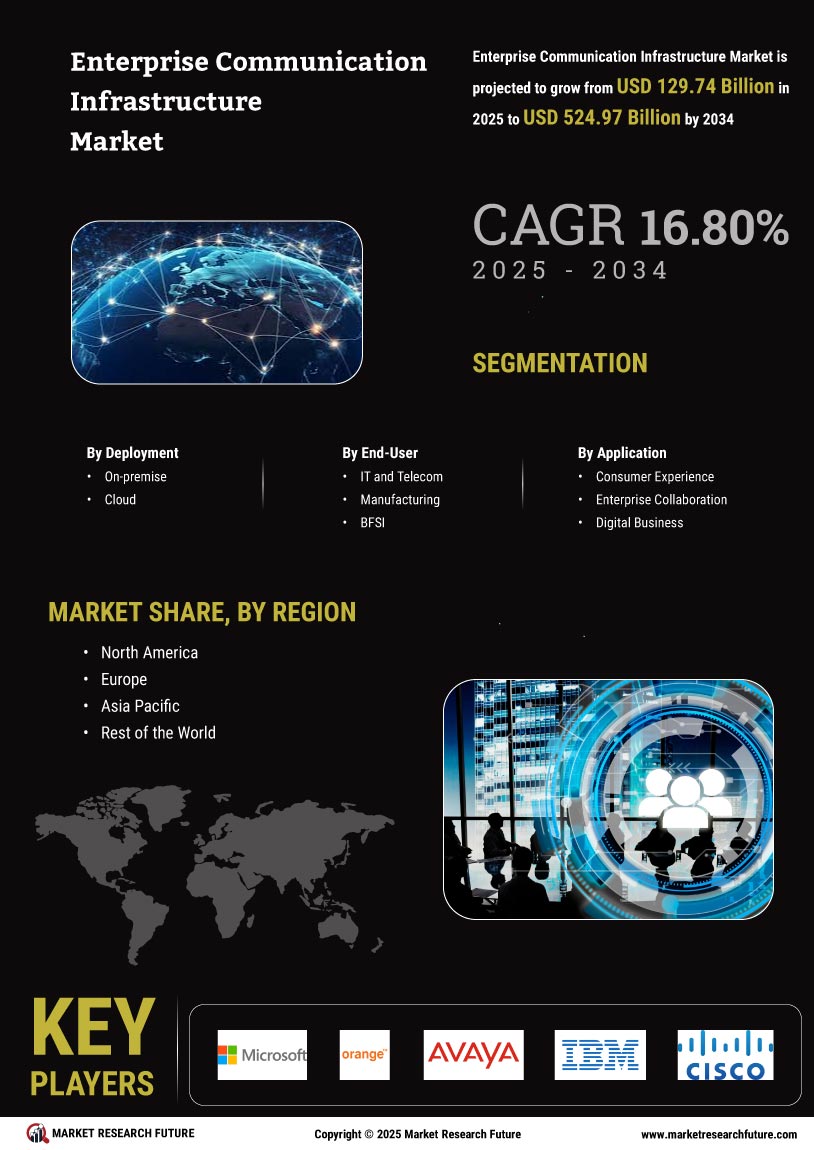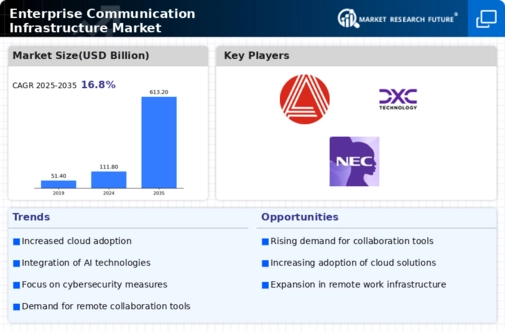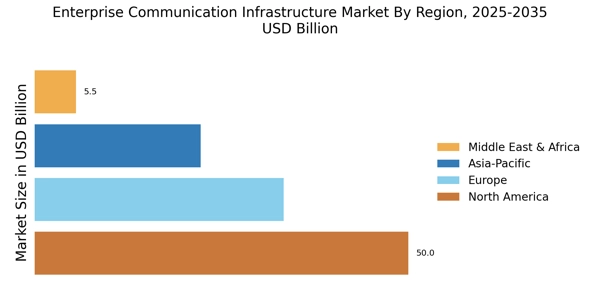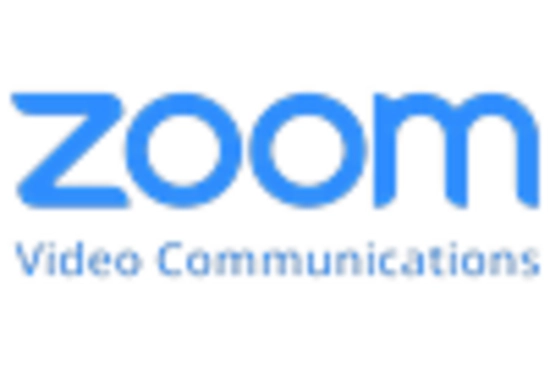Integration of Advanced Technologies
The integration of advanced technologies, such as artificial intelligence and machine learning, is reshaping the Enterprise Communication Infrastructure Market. These technologies enhance communication tools by providing features like automated responses, sentiment analysis, and predictive analytics. For instance, AI-driven chatbots can handle customer inquiries efficiently, reducing response times and improving user experience. The market for AI in communication is projected to grow significantly, with estimates suggesting a compound annual growth rate of over 30% in the coming years. This technological evolution not only streamlines communication processes but also empowers organizations to make data-driven decisions, thereby enhancing overall operational efficiency.
Rising Demand for Remote Work Solutions
The increasing trend towards remote work is driving the Enterprise Communication Infrastructure Market. Organizations are seeking robust communication solutions that facilitate collaboration among distributed teams. According to recent data, approximately 70% of employees are expected to work remotely at least once a week by 2025. This shift necessitates the adoption of advanced communication tools, such as video conferencing and instant messaging platforms, which are integral to maintaining productivity and engagement. As businesses adapt to this new normal, investments in enterprise communication infrastructure are likely to surge, reflecting a growing recognition of the need for seamless connectivity and collaboration tools that support remote work environments.
Increased Focus on Security and Compliance
As organizations become more reliant on digital communication, the focus on security and compliance within the Enterprise Communication Infrastructure Market intensifies. Data breaches and cyber threats pose significant risks, prompting businesses to invest in secure communication solutions. Regulatory frameworks, such as GDPR and HIPAA, necessitate stringent compliance measures, further driving the demand for secure communication infrastructures. Companies are increasingly adopting end-to-end encryption and multi-factor authentication to safeguard sensitive information. The market for secure communication solutions is expected to expand, with projections indicating a growth rate of around 25% over the next few years, as organizations prioritize the protection of their data and compliance with regulatory standards.
Expansion of Mobile Communication Technologies
The expansion of mobile communication technologies is significantly influencing the Enterprise Communication Infrastructure Market. With the proliferation of smartphones and mobile applications, organizations are increasingly adopting mobile-first communication strategies. This shift allows employees to communicate and collaborate from anywhere, enhancing flexibility and responsiveness. Market Research Future indicates that mobile communication solutions are expected to account for a substantial share of the overall communication infrastructure market, with growth rates projected to exceed 20% annually. As businesses recognize the importance of mobile accessibility in fostering collaboration and engagement, investments in mobile communication technologies are likely to rise, further shaping the landscape of enterprise communication.
Growing Need for Unified Communication Solutions
The demand for unified communication solutions is a key driver in the Enterprise Communication Infrastructure Market. Organizations are recognizing the benefits of integrating various communication channels, such as voice, video, and messaging, into a single platform. This integration enhances collaboration and streamlines workflows, leading to improved productivity. Market data suggests that the unified communications market is anticipated to reach a valuation of over 100 billion dollars by 2026. As businesses seek to eliminate communication silos and improve operational efficiency, the adoption of unified communication solutions is likely to accelerate, reflecting a broader trend towards holistic communication strategies.


















Leave a Comment